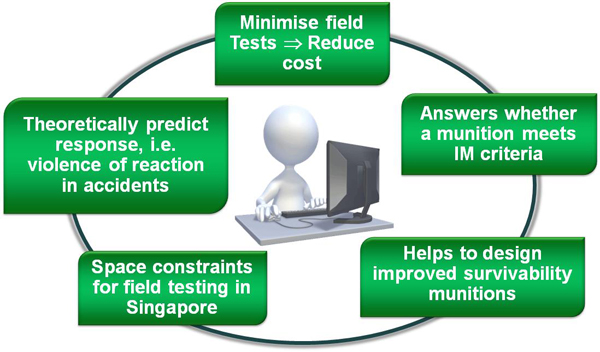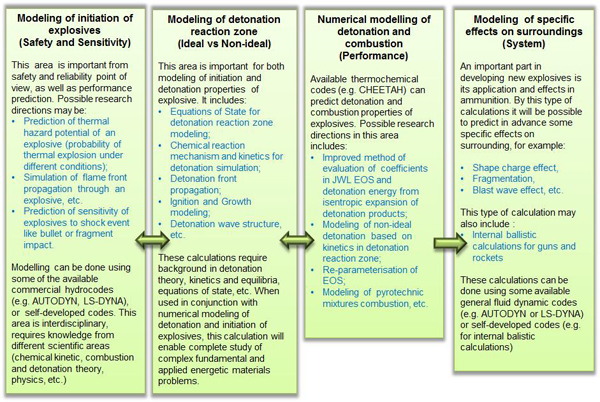Modelling and Simulation
EnRI’s computational team comprises researchers from various disciplines and diverse backgrounds. From the fundamental properties of energetic materials (EM), explosives and propellants to the applications of such, our research interests vary from combustion science, thermochemistry of explosives, detonation physics and chemistry, equations of state for energetic materials, modelling and simulation of threat tests and their effects, as well as the development of codes and subroutines for modelling explosion, burning, deflagration, detonation and sub-detonative events like shock-to-detonation transition (SDT) and deflagration-to-detonation transition (DDT).
Why Modelling and Simulation?

The importance of M&S in this field is obvious. Space constraint and the close proximity of buildings and people in Singapore prohibit large scale field tests. In addition, such field tests are usually very expensive. Good numerical models help in the design of improved survivability munitions and could potentially save lives. Predictive hazard response models remain the goal of every researcher in the field of energetics. Knowledge of EM behavior achieved through M&S also guides the design of munitions with improved performance.
Computational areas in the field of energetic materials

The above topics broadly describe the computational areas encompassed in the field of energetic materials, namely (1) Safety and Sensitivity (2) Ideal vs Non-ideal Explosives (3) Performance and (4) System. The first three research areas are important for understanding the science behind explosive processes, and form the foundation for subsequent System studies (4).
EnRI’s research interests at a glance

The complex nature of the field of energetics necessitates a multi-length and time scale modelling approach depicted in the above figure. From quantum mechanics to molecular dynamics to continuum scale, predicting the response of an energetic material to different stimulus is a non-trivial yet pertinent task. Like many international research agencies and institutes, it is the long-term goal of EnRI to eventually assess the hazard response of explosives with predictive computational models

